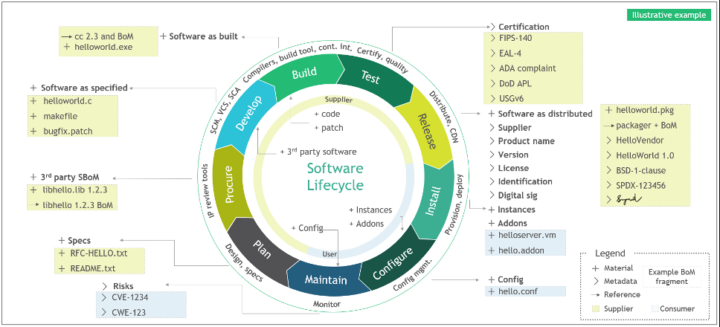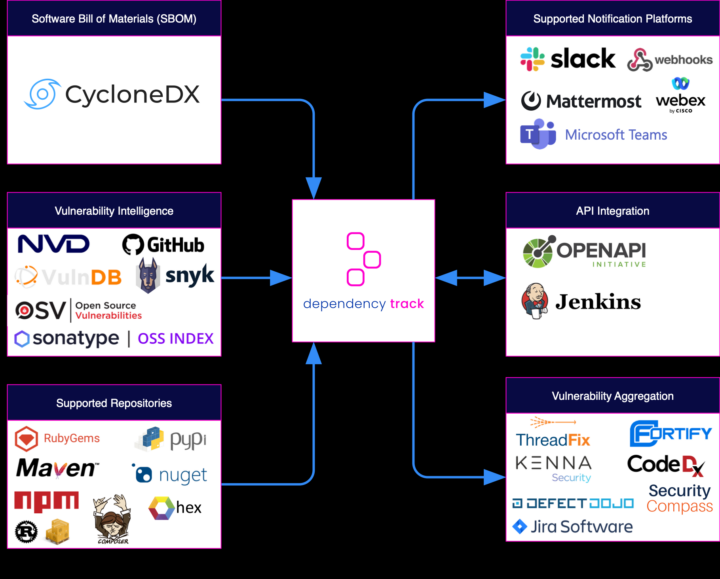
DevOps companies have always been in a constant pursuit of making their software development process faster, efficient, and secure. In the quest for better software security, a shift is happening from using traditional vulnerability scanners to utilizing Software Bill of Materials (SBOM) generation. This article explains why devops companies are making the switch and how SBOM generation provides better security for their software.
A CVE is known to all, it’s a security flaw call
It’s a number assigned, to an exposure we’ve spied
It helps track and prevent, any cyber threats that might hide!
Vulnerability scanners are software tools that identify security flaws and vulnerabilities in the code, systems, and applications. They have been used for many years to secure software and have proven to be effective. However, the increasing complexity of software systems, the speed of software development, and the need for real-time security data have exposed the limitations of traditional vulnerability scanners.
Executive Order 14028
Executive Order 14028, signed by President Biden on January 26, 2021, aims to improve the cybersecurity of federal networks and critical infrastructure by strengthening software supply chain security. The order requires federal agencies to adopt measures to ensure the security of software throughout its entire lifecycle, from development to deployment and maintenance.
NIST consulted with the National Security Agency (NSA), Office of Management and Budget (OMB), Cybersecurity & Infrastructure Security Agency (CISA), and the Director of National Intelligence (DNI) and then defined “critical software” by June 26, 2021.
Such guidance shall include standards, procedures, or criteria regarding providing a purchaser a Software Bill of Materials (SBOM) for each product directly or by publishing it on a public website.
Object Model

SBOM generation is a newer approach to software security that provides a comprehensive view of the components and dependencies that make up a software system. SBOMs allow devops companies to see the full picture of their software and understand all the components, including open-source libraries and dependencies, that are used in their software development process. This information is critical for devops companies to have, as it allows them to stay on top of security vulnerabilities and take the necessary measures to keep their software secure.
The main advantage of SBOM generation over vulnerability scanners is that SBOMs provide a real-time view of software components and dependencies, while vulnerability scanners only provide information about known vulnerabilities.
One practical example of a SBOM generation tool is Trivy, an open-source vulnerability scanner for container images and runtime environments. It detects vulnerabilities in real-time and integrates with the CI/CD pipeline, making it an effective tool for devops companies.
Another example is Anchore Grype, a cloud-based SBOM generation tool that provides real-time visibility into software components and dependencies, making it easier for devops companies to stay on top of security vulnerabilities.

Finally, Dependency Track is another great tool by OWASP that allows organizations to identify and reduce risk in the software supply chain.
The Open Web Application Security Project® (OWASP) is a nonprofit foundation that works to improve the security of software through community-led open-source software projects.
The main features of Dependency Track include:
- Continuous component tracking: Dependency Track tracks changes to software components and dependencies in real-time, ensuring up-to-date security information.
- Vulnerability Management: The tool integrates with leading vulnerability databases, including the National Vulnerability Database (NVD), to provide accurate and up-to-date information on known vulnerabilities.
- Policy enforcement: Dependency Track enables organizations to create custom policies to enforce specific security requirements and automate the enforcement of these policies.
- Component Intelligence: The tool provides detailed information on components and dependencies, including licenses, licenses and age, and other relevant information.
- Integration with DevOps tools: Dependency Track integrates with popular DevOps tools, such as Jenkins and GitHub, to provide a seamless experience for devops teams.
- Reporting and Dashboards: Dependency Track provides customizable reports and dashboards to help organizations visualize their software components and dependencies, and identify potential security risks.
References
- NIST executive order 14028
- BrighTalk webcast: Understanding and Using the CycloneDX SBOM Standard
- https://cyclonedx.org/capabilities/sbom
- https://ntia.gov/page/software-bill-materials
- https://www.whitehouse.gov/briefing-room/presidential-actions/2021/05/12/executive-order-on-improving-the-nations-cybersecurity/

Lascia un commento